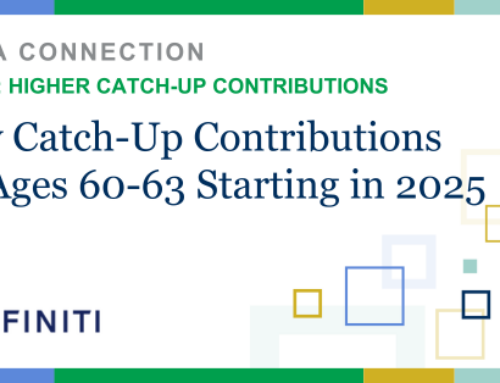Pension plans continue to provide benefits to thousands of people with billions of dollars promised to account holders.
Defined benefit retirement plans don’t capture as much industry attention as their defined contribution counterparts, such as 401(k) plans. But defined benefit (DB) plans — also called pension plans — continue to provide benefits to thousands of people across the US with billions of dollars collectively promised to those account holders.
According to the Public Plans Database¹, the combined value of DB plan assets held by state and local governments as of second-quarter 2019 increased to $4.5 trillion.
A 2019 data point from a Society of Human Resource Management² survey reports that 21% of employers still offer a traditional DB plan available where all employees can still participate. Another 10% of employers had a frozen DB plan, where the plan sponsor “freezes” benefits — that is, stops some or all future benefit accruals. (See the Pension Benefit Guaranty Corporation’s full definition for frozen.³)
DB Plans 101
If you’re more familiar with defined contribution (DC) plans and need a refresher on DB plans, here are key aspects to know:
- Who contributes – Generally, the plan sponsor makes a majority, if not all of the contributions. In some small cases, employee contributions are required or voluntary contributions may be permitted.
- Who calculates contributions – The plan actuary calculates the amount that must be contributed to the pension trust to cover participants’ benefits.
- Who chooses plan investments – The plan sponsor takes the responsibility of selecting the pension plan investments.
- Participants don’t have their “own” account – The pension trust holds all funds for the participants in the plan.
- Traditional plan – These DB plans provide retirement income based on a pre-defined formula. Generally,
the formula factors in years of service with the employer, as well as total earnings. Once an employee reaches a certain age that’s specified by the plan, they begin receiving payouts that typically continue until their death. - Cash balance plan – These pension plans guarantee employees a set amount of money upon leaving the employer. Typically, a plan participant would get a percentage of their pay — for example, 5% contributed to the plan trust. (For an overview on cash balance plans, read our article, Is a Cash Balance Plan Right for Your Company?)
Pension Plan Outsourcing
DB retirement plans are subject to complex administrative guidelines and rules. Regulatory changes, economic shifts and changing business dynamics complicate efforts to keep pension plans compliant.
When a plan sponsor finds the management of the DB plan’s administrative tasks to be too burdensome, they can outsource the work to a third-party administrator (TPA), such as Definiti. Plan sponsors who choose to outsource the administration of their pension can improve DB administration’s overall quality and efficiency by relying on a team of professionals to help share the administrative load — and they can redirect the time saved to their core business’ responsibilities.
Another reason a sponsor may decide to outsource pension plan administration is because of a talent gap at their organization. This can happen when the company’s resident DB plan expert (for example, a long-time human resource employee) no longer works for the company or when newer HR team members only understand how DC plans work and may be unable to manage the pension plan appropriately.
Here’s a worst-case scenario for not having the right expertise on staff or as a partner: the failure to administer the DB plan in a compliant manner can result in significant fines from the Internal Revenue Services, Department of Labor or Pension Benefit Guaranty Corporation. This concern is why DB plan sponsors find it appealing to hand off the day-to-day responsibilities of plan administration.
Administration Cost of a DB Plan
Many factors go into the cost for outsourcing DB plan responsibilities to a TPA. The complexity of the plan, the number of active and term vested participants, whether the plan sponsor needs call center support and the status of the plan (e.g, is it frozen?) all affect the cost.
Plan sponsors can use a co-sourced structure instead of being required to use a full outsourcing model. Ultimately, a TPA should be able to tailor its services to the plan sponsor’s full set of needs and provide a customized quote for the outsourced services.
The Lost Art of DB Plans
Even though DB plans are no longer as popular as their DC counterparts, they are likely to be around for decades to come as participants move into retirement and begin receiving their pension benefits.
Between now and then, we’ll continue to help Definiti’s clients and their participants get the most from the company’s DB plan, keeping ourselves sharp and focused, continuing to practice the lost art of pension plans.
We’re Here to Help
At Definiti, we continue to develop and define requirements within our Pension Outsourcing group. Our focus on robust administration documentation and procedures is key in creating efficiencies and reducing risk for DB plans. Hallmarks of our partnership with plan sponsors include operational excellence, trusted administration practices and execution, sharing market and plan knowledge, maintaining our service-level reputation and strong relationships that delight our customers.
If you’d like to start a conversation about outsourcing your pension plan, call Definiti at 1 (888) 912-3653 or email sales@definiti-llc.com.
—

Mike Trivers
Manager of Pension Outsourcing
With more than 15 years of DB administration experience, Mike Trivers’ focus has been providing superior service to our clients while effectively managing their day-to-day DB plan administration tasks. He serves as a liaison and resource for clients, brokers and Definiti resources in all aspects of the administration of DB plans. In this role, he is responsible for delivering a cohesive, efficient and high-quality service to plan sponsors.
—
This material has been prepared for informational purposes only and is intended to provide general information on matters of interest in the area of qualified retirement plans and is distributed with the understanding that the publisher and distributor are not rendering legal, tax or other professional advice. Readers should not act or rely on any information in this article without first seeking the advice of an independent tax advisor such as an attorney or CPA.
1. Public Plans Database is a partnership between the Center for Retirement Research at Boston College and the Center for State and Local Government Excellence. (tinyurl.com/CRRSLGE)
2. Society of Human Resource Management, 2019 Employee Benefits Survey (tinyurl.com/SHRMDB)
3. Pension Benefit Guaranty Corporation: “An ongoing pension plan in which the plan sponsor “freezes” benefits, that is, stops some or all future benefit accruals. A plan can be frozen in several ways. Under a partial freeze, a plan can be frozen for some, but not all, current participants based on, for example, years of service, job classification, or plant location. Under a soft freeze, benefits typically are increased for wage growth, but not for additional service. Under a hard freeze, no participant accumulates any further benefit accruals. Most frozen plans are closed to new entrants. A plan can be closed to new participants without restricting future benefit accruals of participants already in the plan. Generally, such closures also are viewed as a type of plan freeze.” (tinyurl.com/PBGCglossary)



